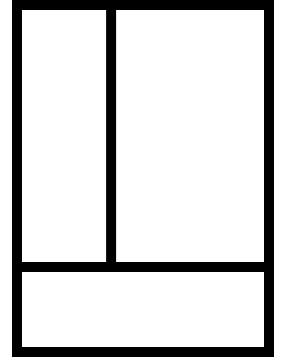With the Cornell study technique, our notes will be easier to study and we can easily locate what is important. 
Where does the Cornell method come from?
At Cornell University, in the 1950s, the educational psychologist
Walter Pauk developed this method to take notes in a more effective way, especially for subjects where it is necessary to synthesize and put into practice what has been learned, but also to facilitate the task of preparing exams. From the time we start studying in school until we get our
university eTitle, our note-taking technique improves over time, but sometimes we get stuck in what we know because we don't make the effort to change, even if it's worth it, and this is one of those cases where trying something new can be very positive for us and our academic results.
How do we start?
The first thing is to divide the sheets we are going to use into three parts. There should be two columns and a bottom area. Let's think of making an inverted "T", but somewhat uneven, so that we have the sheet divided into two vertical columns (the right one wider than the left one) and a horizontal space at the bottom:

It is best to be proactive and make a good stack of pages with this division so that we can forget about the "craft" part during class.
The right column
This is the part where, according to the Cornell method, we should take notes as we normally would. We must remember that taking good notes is not about copying everything as if we were recorders, but about noting only what is important. In a class explanation, there are main ideas, secondary ideas, and filler, so we should only write down the first two. In this column, we will write down formulas, dates, important explanations, and anything else we consider relevant to what is being discussed in class. It is also very positive to have an abbreviation code to save time. When we start college, the abbreviations are basic: "q" instead of "que", acronyms, dashes or crosses at the end of all words ending in "mente", etc. But as we become familiar with the vocabulary specific to our field of knowledge, we will see that there are many words that are repeated constantly and that we can shorten. It is recommended to spend some time at home to find those words and create our own code. Once we have it done, we won't forget it and we will save ourselves a lot of arm fatigue and a lot of time not writing down anything relevant.
The left column
This is the narrower column and it is used to write down key concepts, questions or doubts we have, main ideas, and anything else we see as more relevant. It doesn't matter if we have already written it down in the other column, because this is not about avoiding repetition, but about taking notes and then extracting the essential, which is precisely what we will place here. Later, this column will help us quickly locate everything that we will most likely be asked in the exam and to resolve the doubts we have written down. We must remember that teachers are there to teach us, so we should not be afraid to ask questions; but if we don't want to interrupt in the middle of an explanation, this left column serves to collect our doubt so that we can ask when the teacher has finished speaking or during a pause. The Cornell method has a great added advantage: it forces us to be very attentive in class, enhances our active listening, and therefore allows us to concentrate better.
What is the bottom margin for?
In the Cornell method, this space is reserved for summarizing the content of the notes. Although it may be tedious to review everything at the end of class, filling in this box will be the key to making this system useful, as we will write down everything we have seen in a systematic way and in our own words. This will help us a lot in understanding the contents of each subject, memorizing better, keeping up with the pace of the class without any problem, and studying less but with better results when exam season comes. The Cornell method allows us to have all our notes well organized and summarized from the beginning, but with half the work of coming home, rewriting them, and starting to summarize. Doesn't it deserve at least a try? We believe so.


 It is best to be proactive and make a good stack of pages with this division so that we can forget about the "craft" part during class.
It is best to be proactive and make a good stack of pages with this division so that we can forget about the "craft" part during class.

 It is best to be proactive and make a good stack of pages with this division so that we can forget about the "craft" part during class.
It is best to be proactive and make a good stack of pages with this division so that we can forget about the "craft" part during class.

